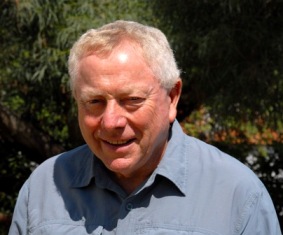Out with Papa-figos

Clive Viney - co-author of Algarve Wildlife - the natural year
Papa-figos (which literally translates as fig eater) is the Portuguese name for the Golden Oriole, one of the iconic visiting birds of the Algarve. Clive Viney is the co-author of Algarve Wildlife - the natural year, and now, under the guise of Papa-Figos, chronicles his finds, thoughts and feelings while walking in the Algarve countryside throughout the natural year. Look out for his regular updates, illustrated by his fellow co-author and photographer, Ray Tipper, who has kindly provided some of the photographs that illustrate these articles by clicking through from the links below.
Seahorses in the Ria Formosa

Long-snouted Seahorse - Picture Matt Foster, Wikipedia
To my surprise we awoke to clouds and later a few spots of rain. With the family I drove to Fuzeta to join Passeios Ria Formosa’s trip to observe seahorses. Expecting difficulty in parking we arrived early and took coffee by Fuzeta’s town beach on the lagoon, which, although already busy looked attractive. There were 13 of us on the small boat, a mix of English, Germans and Portuguese. Our skipper and guide was Filipe, who told us that he was studying marine biology at Algarve University. My share of the scheduled two-hour trip cost €200 (five of us), which was not cheap. We sped along the channel to Armona, where I was surprised to see that oyster cultivation was very extensive. Filipe said that almost all the oysters were exported to France, which brought a wry smile to my face as on both occasions that I’d eaten local oysters I was violently ill. To me the channels of the Ria Formosa look far too sluggish for healthy oysters.
As it was low tide there was much birdlife to enjoy. The numbers of Oystercatchers, Grey Plovers, Whimbrels, Eurasian Curlews, Bar-tailed Godwits and Mediterranean Gulls were notable. I was surprised to see how many people used the inner Ria Formosa. There were clam and bait diggers everywhere and any scrap of sand attracted boats and sunbathers.
After a couple of worrying engine failures, we moored about a hundred metres off Barra da Armona at the western end of the Ilha da Culatra. The water was about one and a half metres deep and the bottom sandy. Evidently we were at the edge of a seagrass bed. Basic masks and snorkels were provided and at the back of the boat were rudimentary steps. The sea was freezing cold and the visibility very poor. Filipe wore a wet suit. Apart from a few Sand Smelt, I could see nothing moving. Apparently seahorses spend their lives either upright, anchored to the sand, or when disturbed lie flat on the seabed. In these conditions they were almost impossible to see. However, Filipe lifted one very carefully on a finger and while we trod water all had a good view through our masks. Grandson Sam, who desperately wanted to see a seahorse, was satisfied but I had to rush him back to the boat as he was suffering from the early stages of hypothermia. His younger brother, Frankie, had decided that staying on board was the best option. I returned to Filipe, who showed me a heavily pregnant male clinging to the seabed. Yes, role reversal is taken to the extreme in seahorses.
Filipe said that the only species now found in the Ria Formosa is the Long-snouted Seahorse Hippocampus guttulatus but that is under severe threat from illegal trapping and pollution. Until recently it was more easily found along the Ilha da Fuzeta but sadly, no longer. Seahorses are classified as endangered (data deficient) and as such are protected by law.
The Algarve University Project Seahorse registered an 85% decline between 2001 and 2009. Earlier this year, during Ria Formosa Week, untreated sewage was identified as entering into the Ria Formosa at multiple points - most worryingly at the Olhão ferry terminal. In January, a Portuguese family was caught red-handed by Spain’s Guardia Civil in possession of over 2,000 dry seahorses being transported in three suitcases. They were being sold to dealers in Cadiz, who were also arrested. The shipment could have fetched €20,000 on the Chinese market where they are sold as a so-called aphrodisiac medicine. Both news items were found in www.algarvenews.com.
Getting back onto the boat was near hysterical with much pushing and shoving of bottoms. For me, the trip had been a new experience and as such worthwhile but I would hesitate to recommend it to others.

